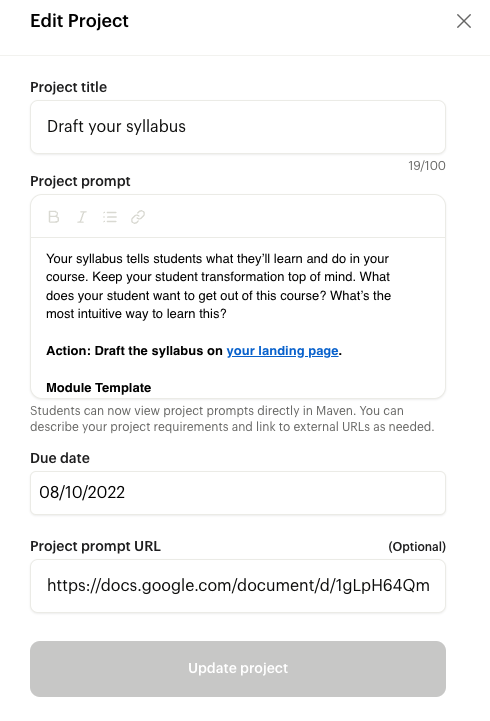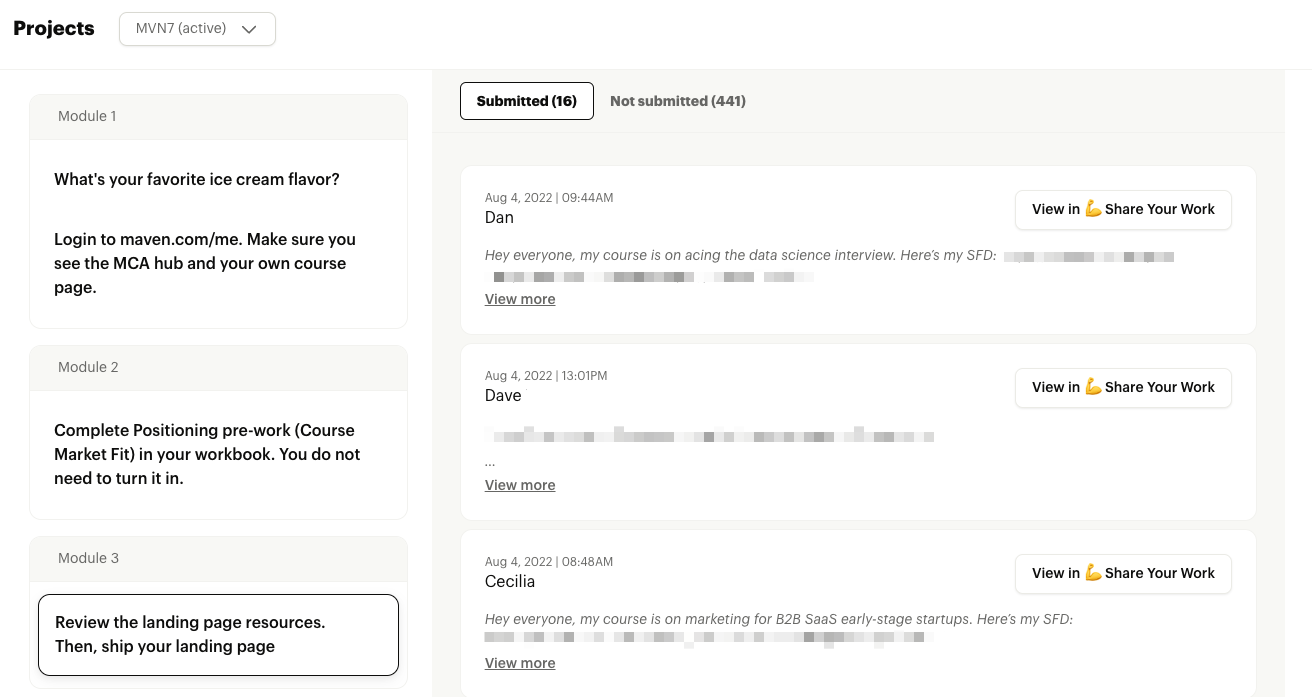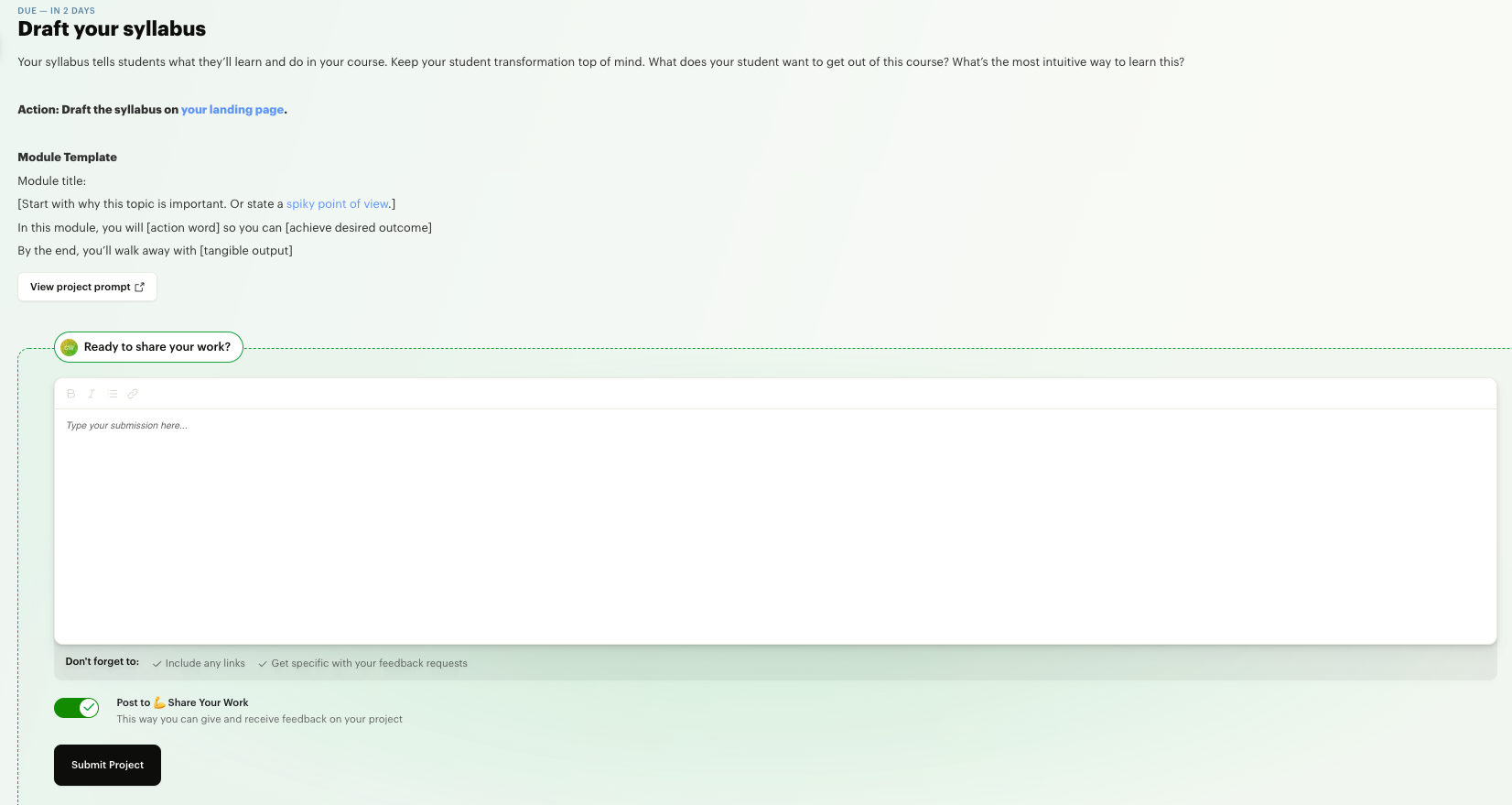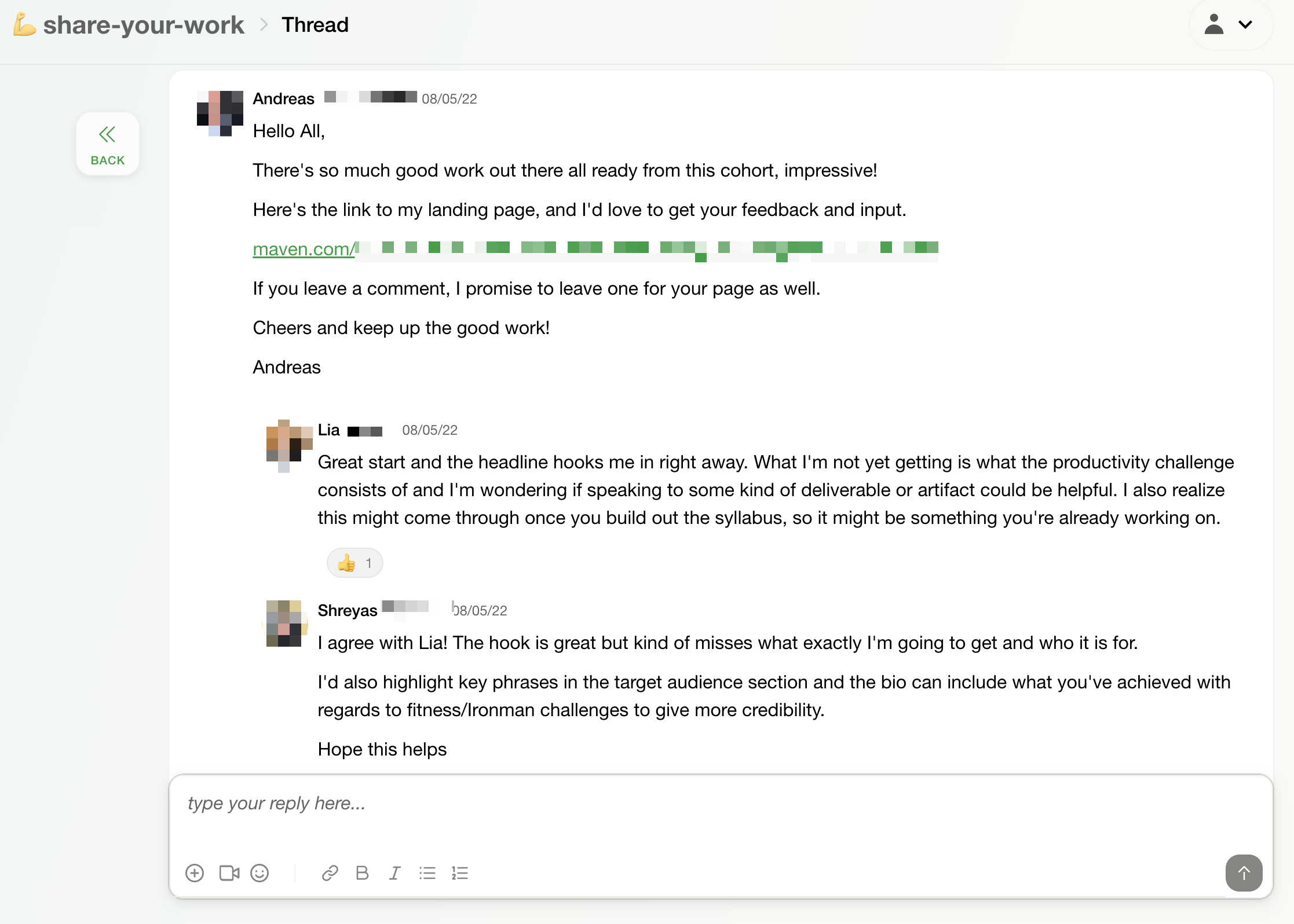Engage your students with projects


Summary
- Projects in your cohort based course ensure students leave with a meaningful artifact.
- Projects help students demonstrate and solidify their learnings.
- The Maven syllabus houses all your course projects and student submissions.
- Students can automatically share projects to the entire cohort community for peer feedback.
What are projects?
- Reflection: Students respond to an open-ended question to facilitate deeper thinking. They could write their response, share it in the community, or record a video.
- Step by step: Students solve a problem using a framework or template. This is great for reinforcing a framework or guiding students through a complicated process.
- Practice: Students repeat a skill to master it. This is useful for skills that benefit from repetition until you hit a certain threshold for mastery like: kicking a soccer ball 100x, practicing your scales on the piano, or typing until you hit a words-per-minute goal.
- Create: Students put their learning into practice, connect it to their work or life, and develop an original work. For example, if you were teaching a data visualization with Tableau course, you might ask your students to create a Tableau dashboard using publicly available datasets.
- Present: Students showcase their work. Students can present in live sessions (e.g., 'Demo Day') or via recorded videos posted to the community.
Instructor View
- Create project prompts
- Track student work
- Facilitate peer feedback
- Give personalized feedback
Project setup

Review student projects

View in 💪 Share Your Work to respond to their post in the community. Because student can share their work publicly, you can easily facilitate peer feedback by encouraging them to comment on each others' work. Student View
What students see


Related Courses
Strategic Design Career Accelerator
Identify strategic decisions. Breakdown business goals to project initiatives. Connect design to business. Communicate ideas effectively.
AI-Powered Project Management
If you can’t lead projects + use AI, you’re replaceable. This is your solution to future proof your career.
Create a system to keep documentation in use and updated
If it's not used, it's not useful! Set up routines and responsibilities to enable yourself and your team to use and update documentation.
Project Management Bootcamp for Non-Project Managers: AI-Enhanced
Build 5 project management power skills that help non-project managers perform confidently in fast-moving, high-pressure roles.
Become a Freelance Project Manager
Transition from employee to Freelance PM and secure your first paid client in 60 days